Genre: Platform Developer: Sonic Team Publisher: Sega Enterprises Players: 1 Released: 2013
The Sonic series saw something of a renaissance with the 2010 release of Sonic Colours on the Wii and DS. This was shortly followed by the excellent Sonic Generations on Xbox 360, PS3 and PC in 2011. Both Sonic Colours and Sonic Generations were generally well received by fans and critics alike. Even though I’ve enjoyed very few of the Sonic titles released since the mid-’90s, I too surprisingly enjoyed both these games. 2013’s Sonic Lost World was the first new major Sonic title following Generations and one of three originally announced as Wii U exclusives. Mario & Sonic at the Sochi 2014 Olympic Winter Games is the second and the poorly-received Sonic Boom was the third. While this article is mostly based on the Wii U version, the game was later ported to PC in late 2015 and there is another version on 3DS.
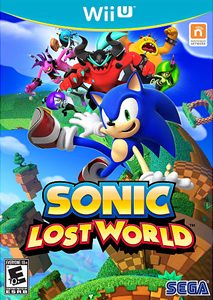 An initial glance at Sonic Lost World in action might remind long-time Sonic fans of Sonic Xtreme, the Sega Saturn game that wasn’t to be. There is also some obvious influence from Nintendo’s Super Mario Galaxy games on the Wii. The elements from these two games are superficial though, and with the latter limited to Sonic’s occasional traversal on and between spherical platforms in certain acts. Sonic Lost World does change the formula slightly, especially with the way Sonic is controlled, but it quickly settles into the hybrid 3D/2D formula of the more recent titles and takes more after Sonic Colours than anything else.
An initial glance at Sonic Lost World in action might remind long-time Sonic fans of Sonic Xtreme, the Sega Saturn game that wasn’t to be. There is also some obvious influence from Nintendo’s Super Mario Galaxy games on the Wii. The elements from these two games are superficial though, and with the latter limited to Sonic’s occasional traversal on and between spherical platforms in certain acts. Sonic Lost World does change the formula slightly, especially with the way Sonic is controlled, but it quickly settles into the hybrid 3D/2D formula of the more recent titles and takes more after Sonic Colours than anything else.
Sonic Lost World controls a little differently from previous entries in the series. The most notable difference is the use of a run button with the right trigger. The left trigger is used for the spin-dash. Sonic retains his ability to perform lock-on attacks but now has the additional ability to kick enemies. This ability allows Sonic to kick one enemy into others and is sometimes necessary to expose certain enemies to direct attack. On top of this, there is also a parkour system allowing Sonic to grab and hop between ledges and wall jump.
The parkour is mostly used in the side-scrolling sections and is especially necessary when escaping from oncoming dangers like lava or pursuing enemies. The open areas on a 3D plain are usually the speedier sections where the run button and spin dash will be used often. There are also a number of zones that are literally on-rails where Sonic will have to jump between rails, over mine carts (yes, mine carts!) and other obstacles. Many zones stick to one style, but there are also a number that switch between the 3D and 2D sections.
For the most part the game controls very well, but I would put emphasis on “for the most part.” When I initially played the game way back when it released in 2013, my time with it was an uneven mix of enjoyment and frustration, and once through the game’s seven areas, I found I felt the game was merely “okay.” There are the usual cheap deaths through bottomless pits, unexpected enemies and moments that seem to just suddenly change the rules. More important than learning the layout of a zone is learning the controls. They do work; it just doesn’t always seem like it.
There are times that will frustrate, like when you will miss a jump or Sonic will fail to grab a ledge. The controls also do initially feel rigid, especially in the side-scrolling stages, and the physics engine will take getting used to. The parkour aspects in particular will test your patience, particularly when jumping across and between walls, when one slight miscalculation will see Sonic fall to his doom. There are certainly some badly designed sections and plenty of frustration, but once I learned the controls, I found the errors were more my own than the games.
A few scattered features I haven’t mentioned include the return of wisps from Sonic Colours. These aren’t a major feature, but they are there but thankfully mostly optional. There are also items that can be earned and used at any time in levels. These include a ring bonus, extra life, and wisps; and on the Wii U version they can be sent and received from other players through the Miiverse. In my playtime I honestly forgot I could do this most of the time. There are also some limited co-op and two-player options which I didn’t try. Additionally, there are time trials and leaderboards to extend the game, but almost everything can be experienced within about ten hours.
The game’s seven main areas seem at first to be the typical forest, tundra desert, volcano environments but each of the four zones in each area are usually unique. A good example of this is zone three of Desert Ruins, which is titled “Dessert Ruins” and has Sonic running and jumping between sweets, entertainingly mixing up the theme. This is probably the most unique example, but many zones depart significantly from the theme of the area and most zones are unique in their own way. I also particularly enjoyed one zone where Sonic is trapped in a giant snowball the entire time. Upon finishing the story, there is an additional world to experience with even more wacky ideas that are well worth experiencing. If you’re playing on Wii U, there are also two free downloadable levels, one with a Yoshi theme and the other Zelda. Although both are short, they certainly make the Wii U version a better choice if you have the option.
I’ve gone a long way without mentioning the story, which is because it’s a very typical Sonic story. Dr. Robotnik, who the young ones now call Eggman, is doing the same thing he’s been doing for 25 years and Sonic and Tails are out to stop him. This time Eggman has teamed up with the Deadly Six, each of whom seem to embody a negative emotion. Knuckles and Amy also make an appearance, but thankfully it’s only Sonic when playing the game. If you’re wondering, the “Lost World” is called the “Lost Hex” in the game and is merely the setting for the action that takes place. Although the story isn’t anything special, the cut scenes are well-animated and often amusing in a slapstick sort of way. I was actually disappointed when I discovered there was no way to replay cut scenes in-game (even the ending) without starting a new game.
The animals Sonic must rescue do have an impact on progression, as a certain number must be rescued to access later zones. Many can be found throughout regular zones inside many familiar enemies, but there are also bonus carnival stages where they can be collected. This is one area where the Wii U’s gamepad comes into use, as you use the touch-screen to move a trampoline that bounces Sonic into balloons with animals trapped inside. This is more fun than it may seem and adds even more variety to the gameplay. The Deadly Six also regularly appear outside of the cut scenes in boss battles. Many of these encounters are disappointingly simple and sometimes over as quick as they start. There is only one boss in the game I found challenging late in the game, and even the final battle is something of a fizzler.
Sonic Lost World has strangely led me to consider how much my mood affects my enjoyment of a game. There was close to three years between the first time I played it and my replay of the game for this article. In that time, my feelings have changed considerably, and I now consider it up there with both Sonic Generations and Colours. It has plenty of flaws, and I can appreciate why some wouldn’t like it, but there is a lot more to like than dislike. Sonic Lost World has a wonderful soundtrack and colourful and vibrant, if not detailed, visuals, along with some genuinely clever gameplay. As long as you’re willing to take some time to learn the controls, there is a rewarding experience to be discovered.


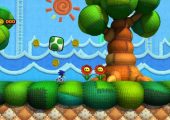
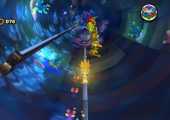
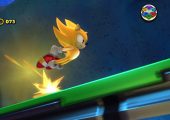
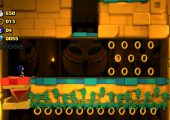
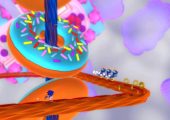
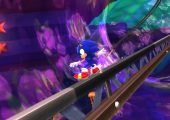
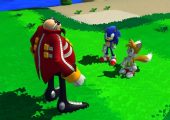
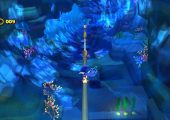
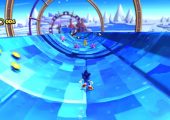
Pingback: Video Game Reviews & Articles | The Essential Malady
Pingback: Sega-16 Articles | The Essential Malady